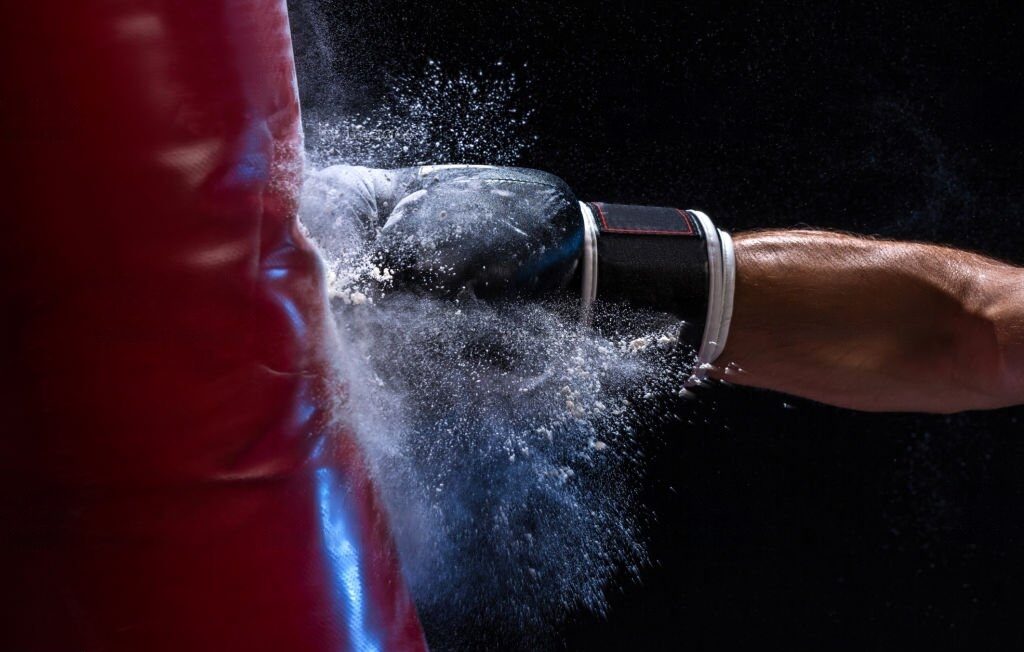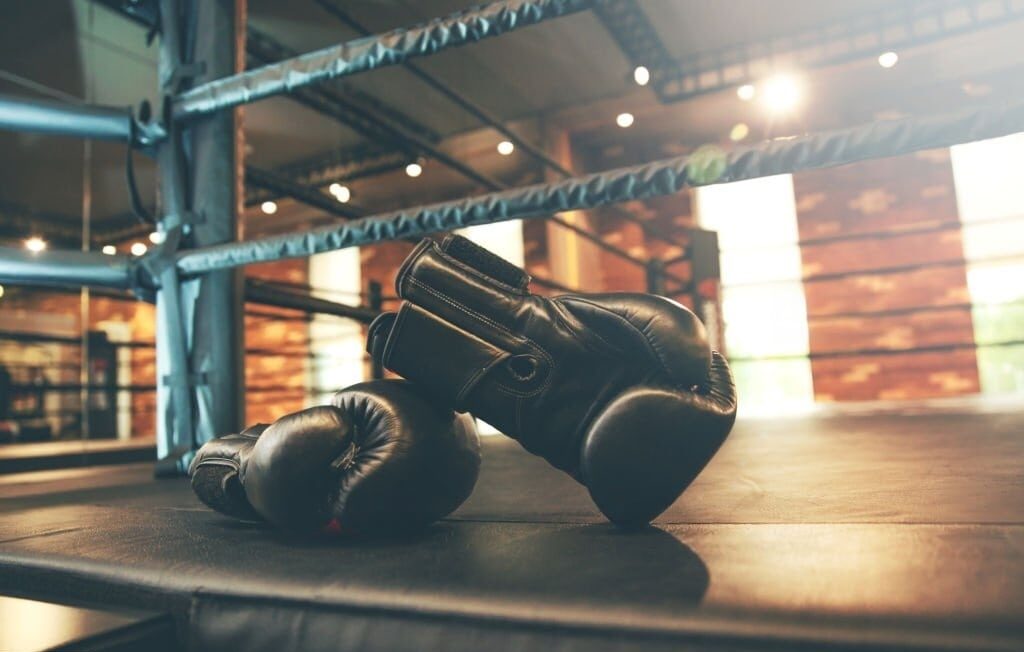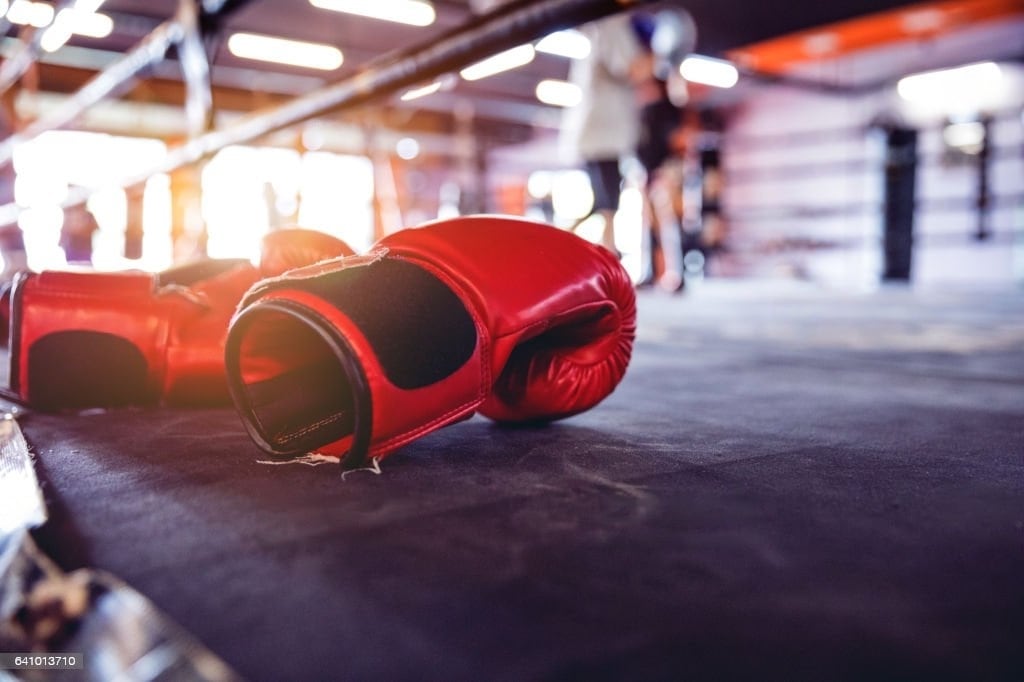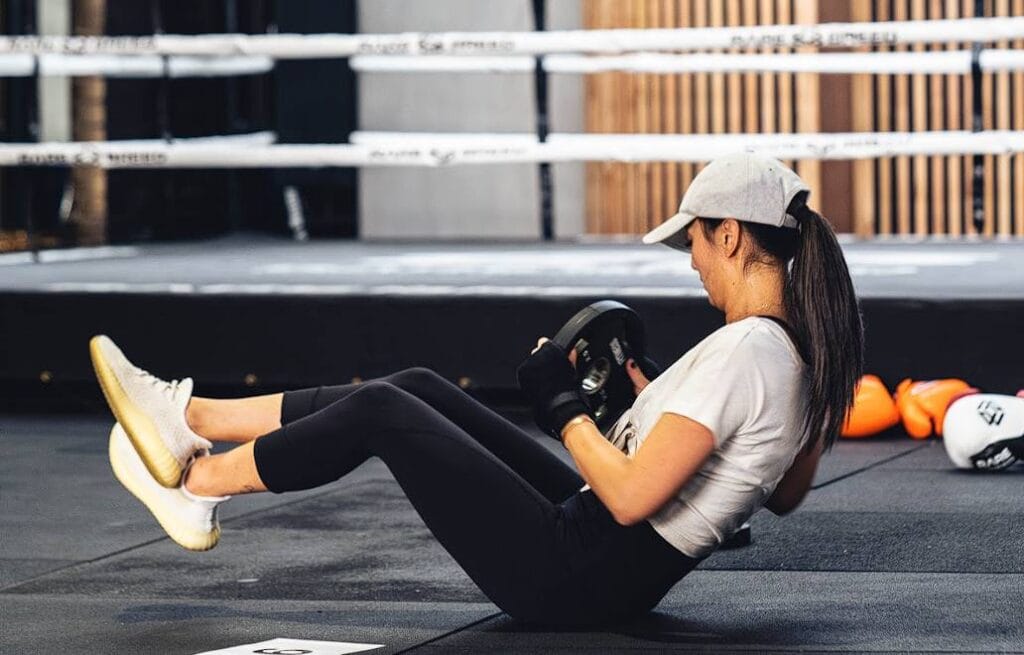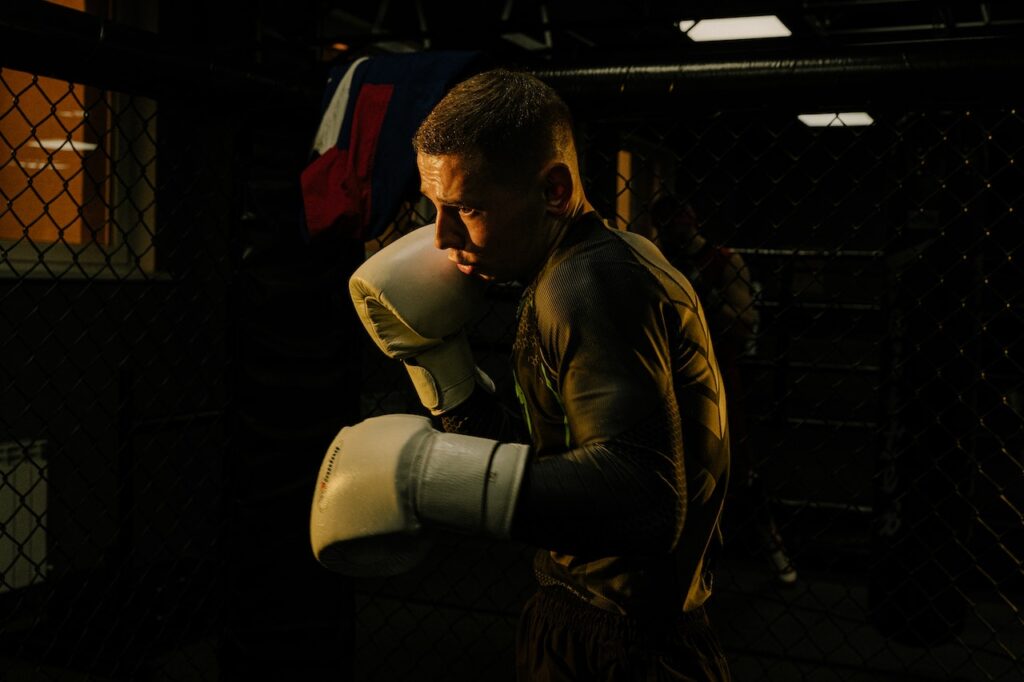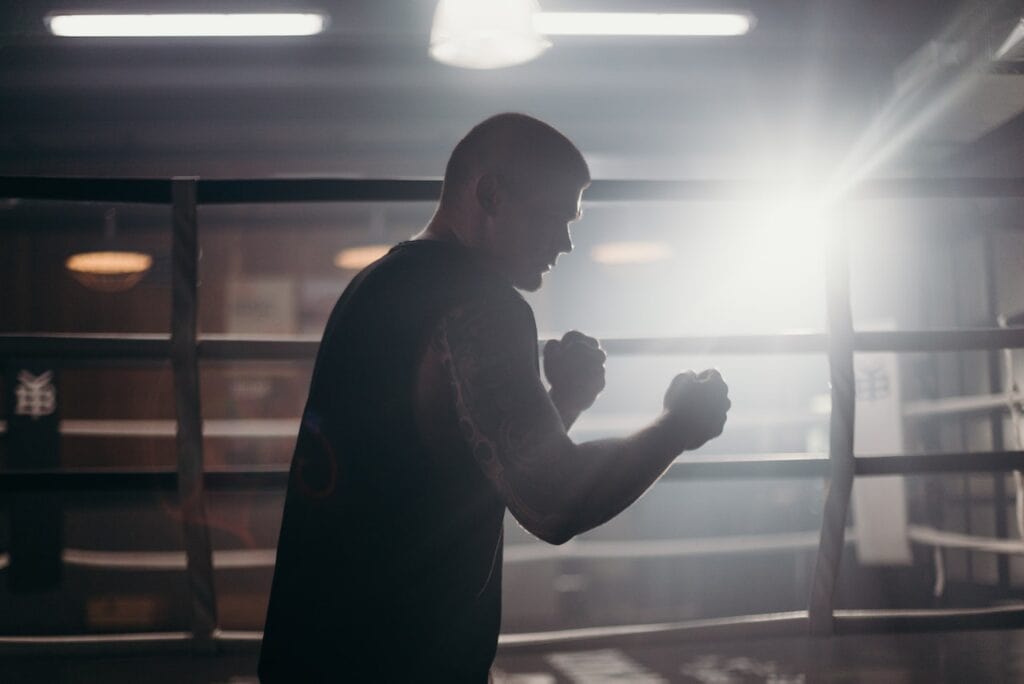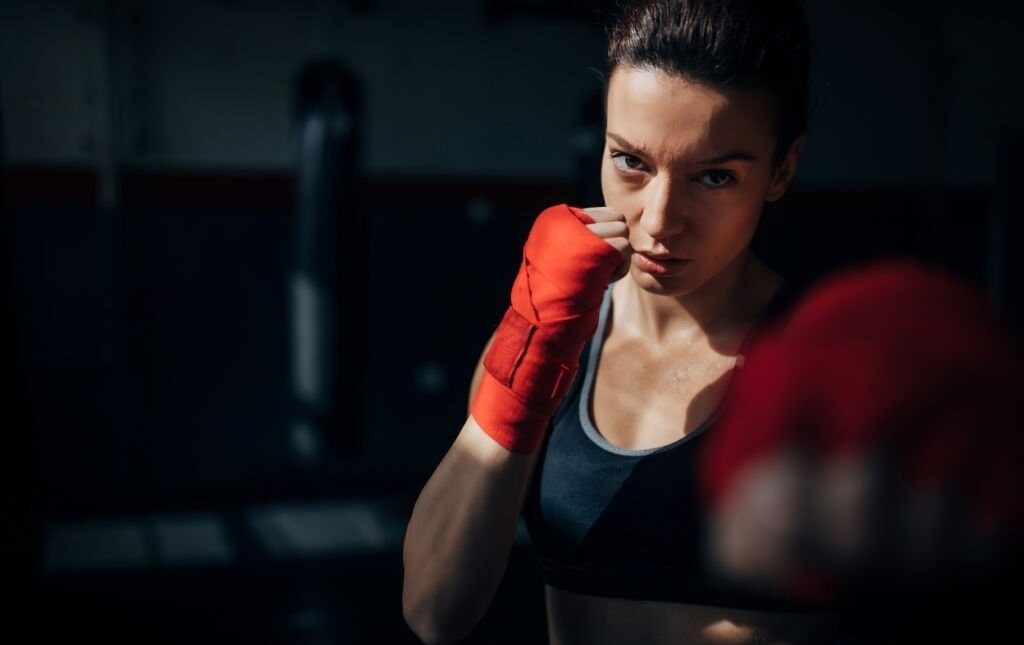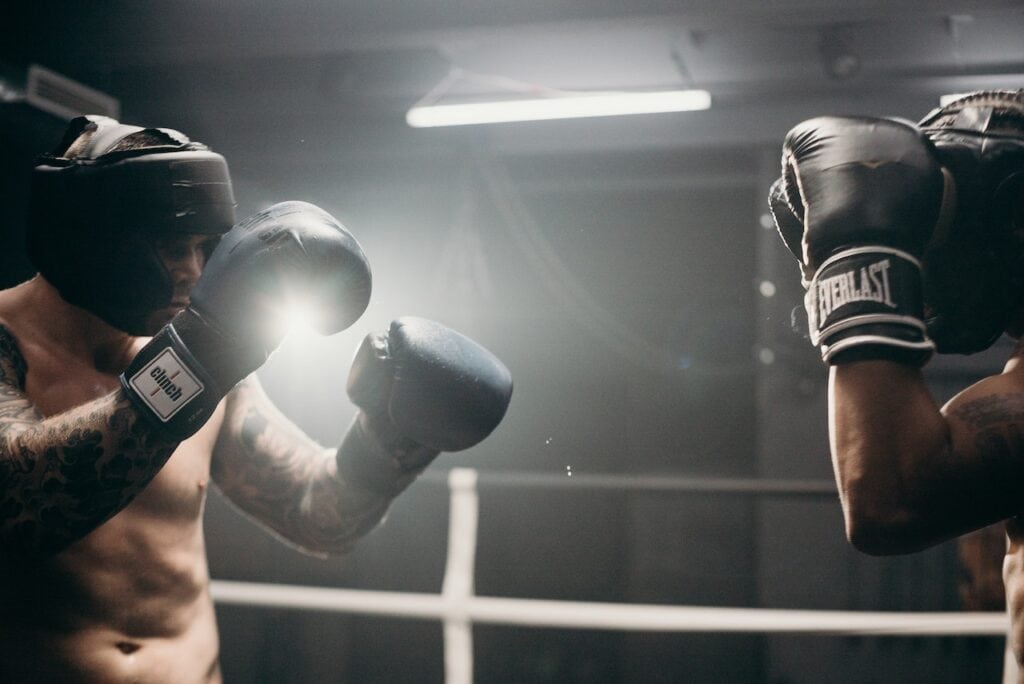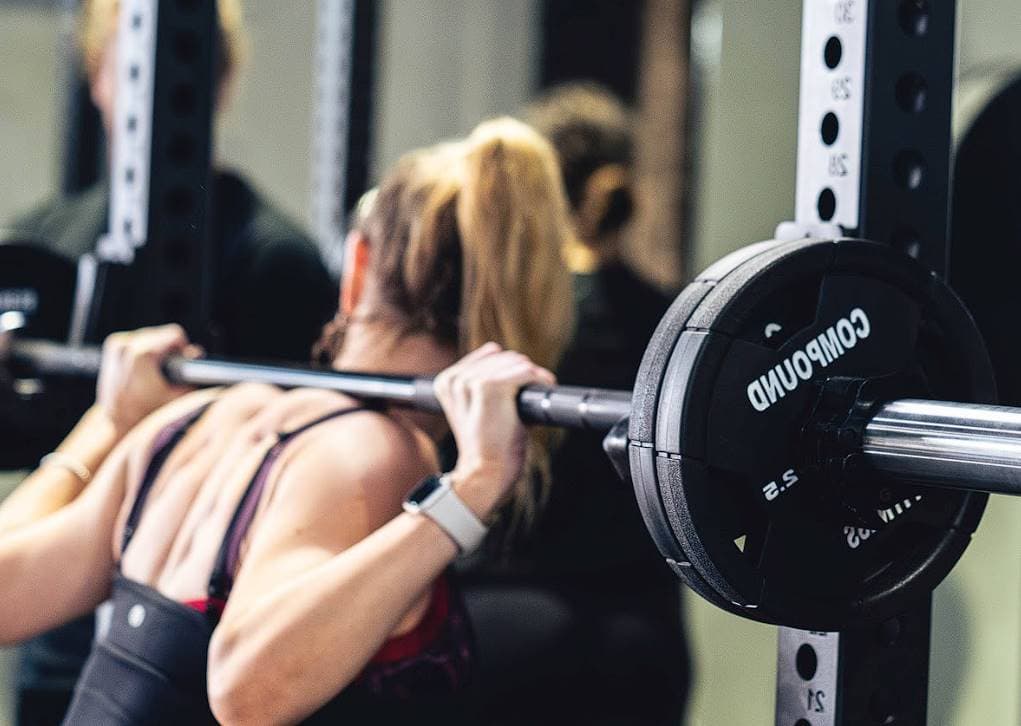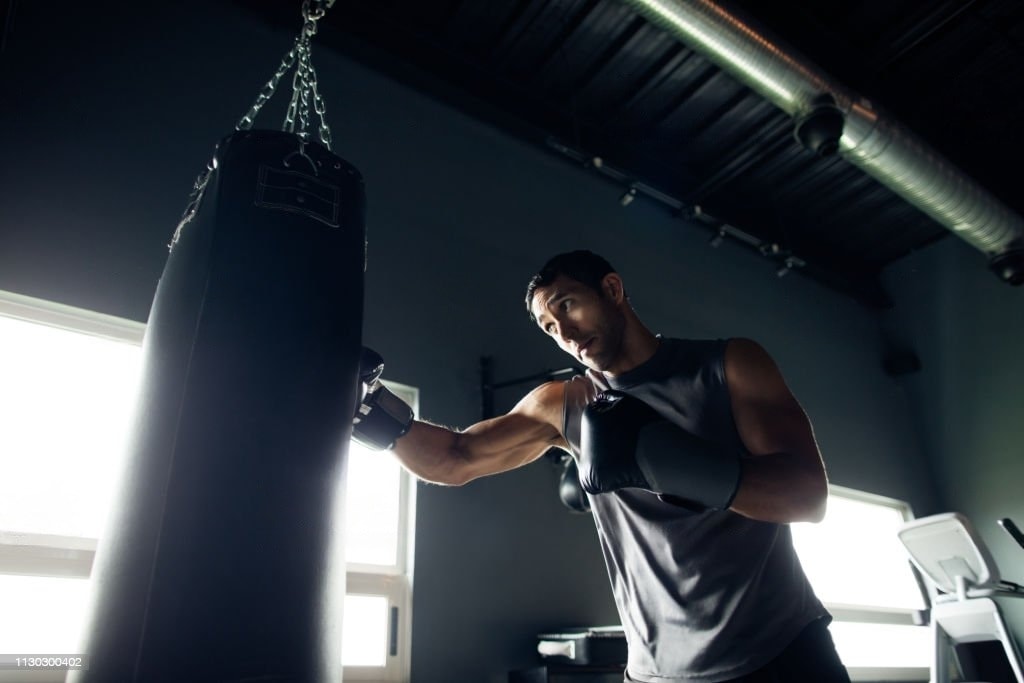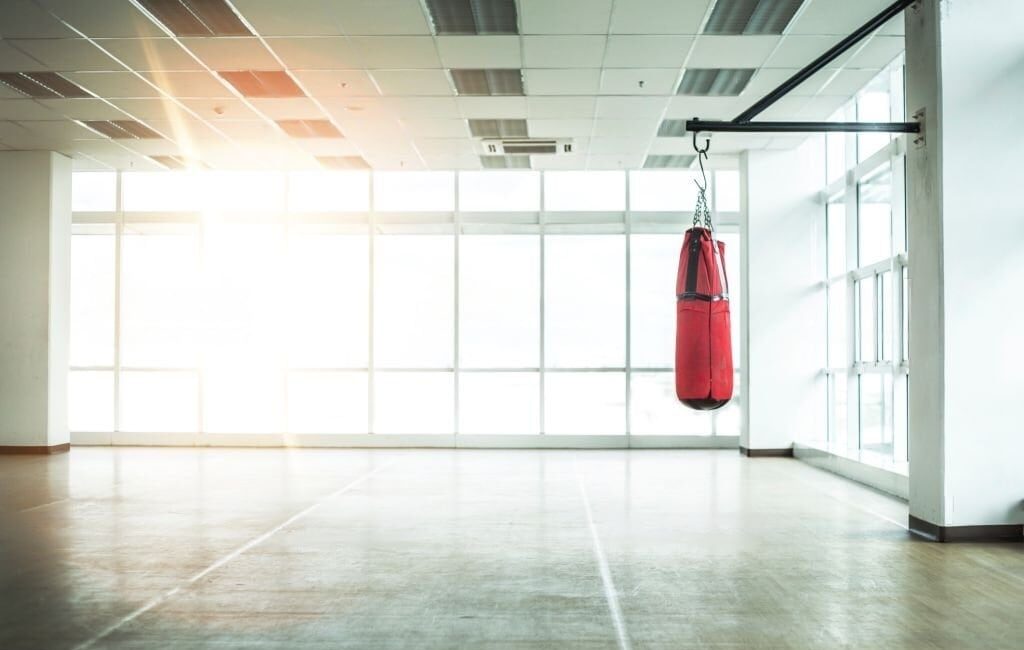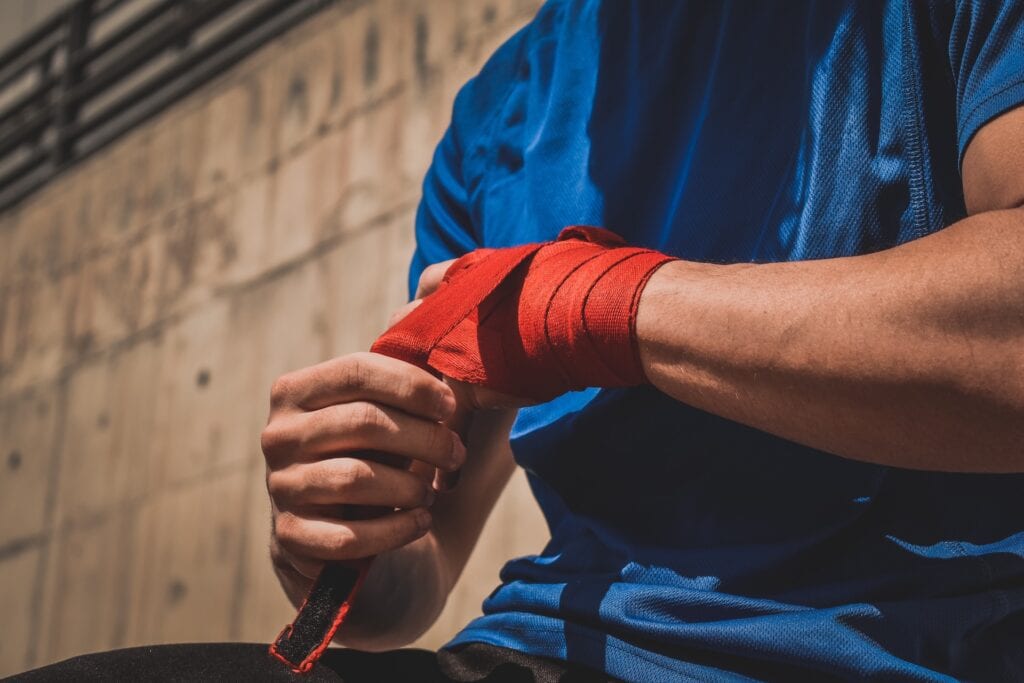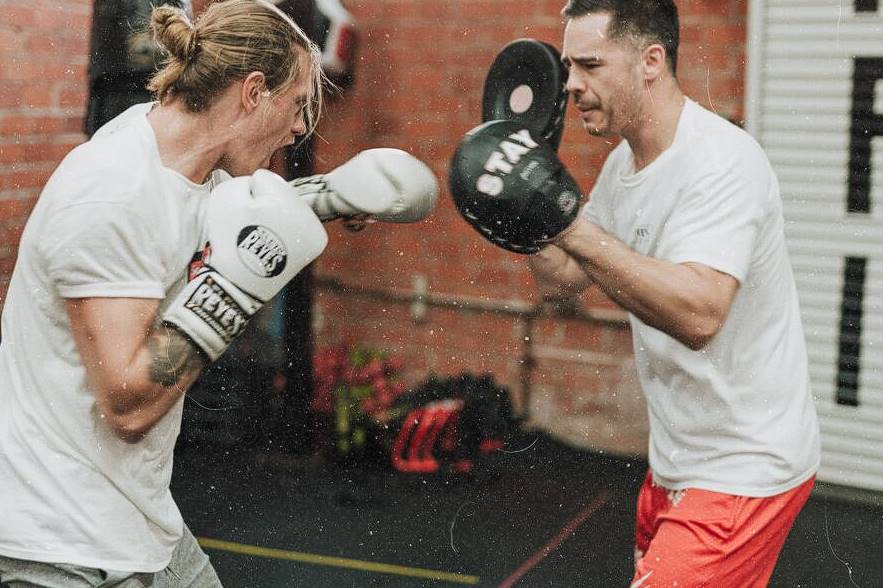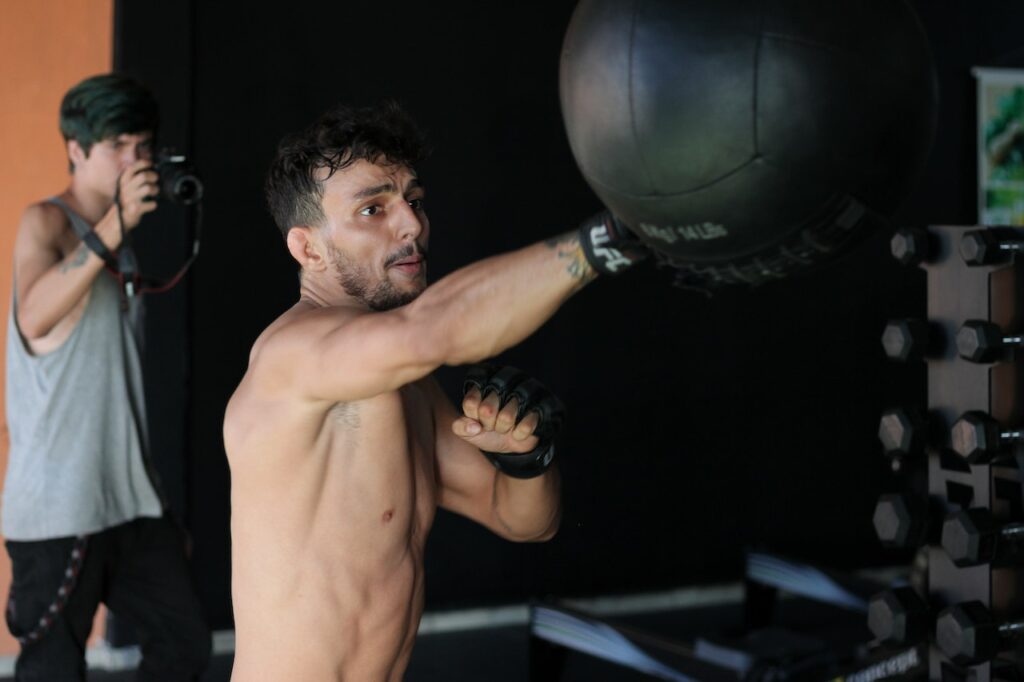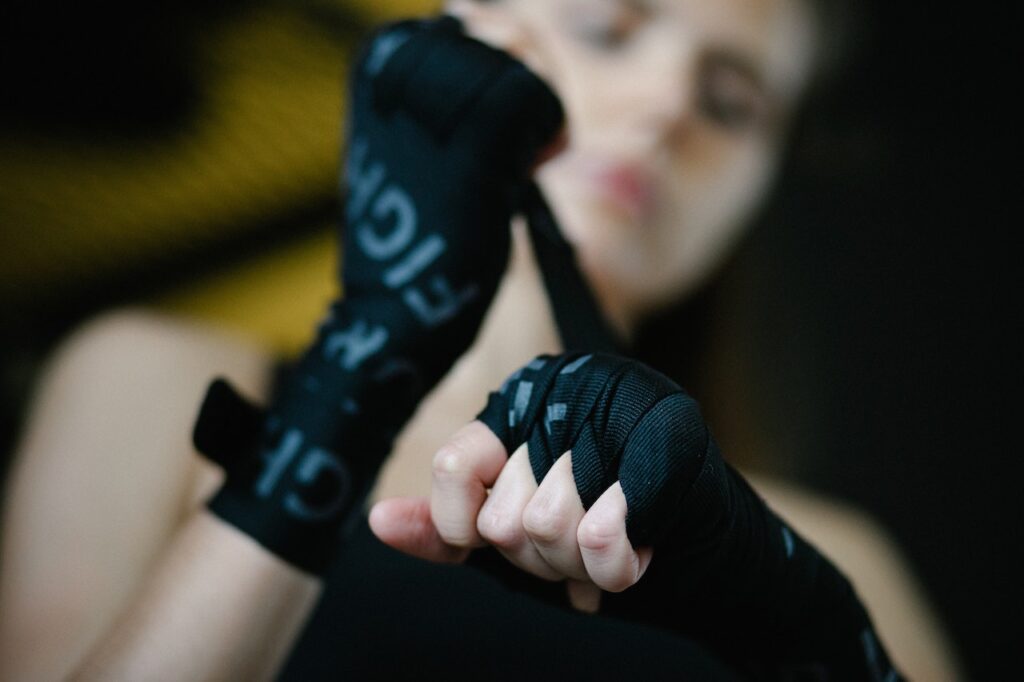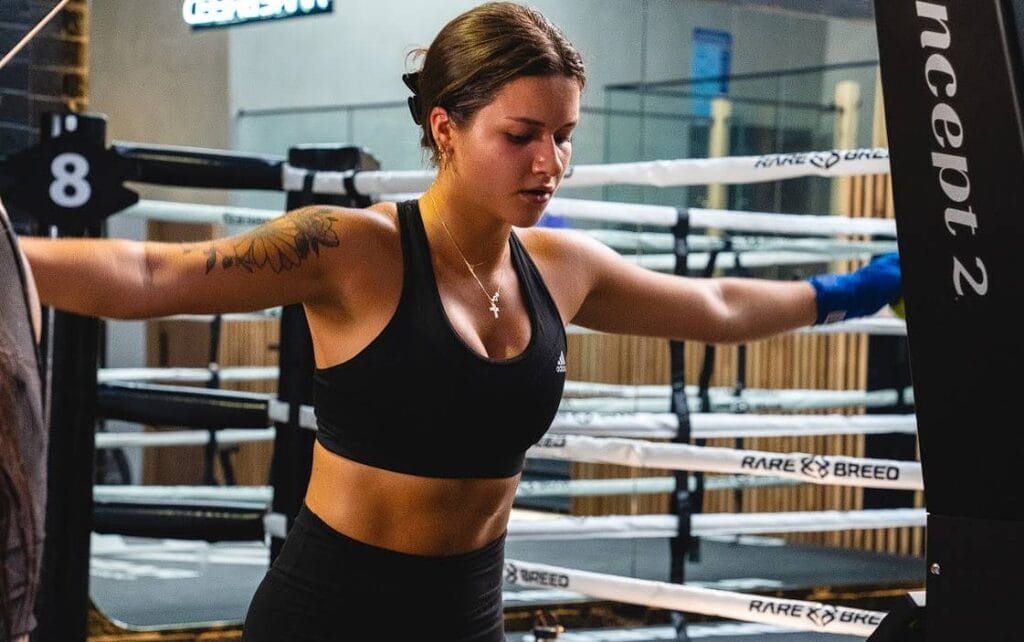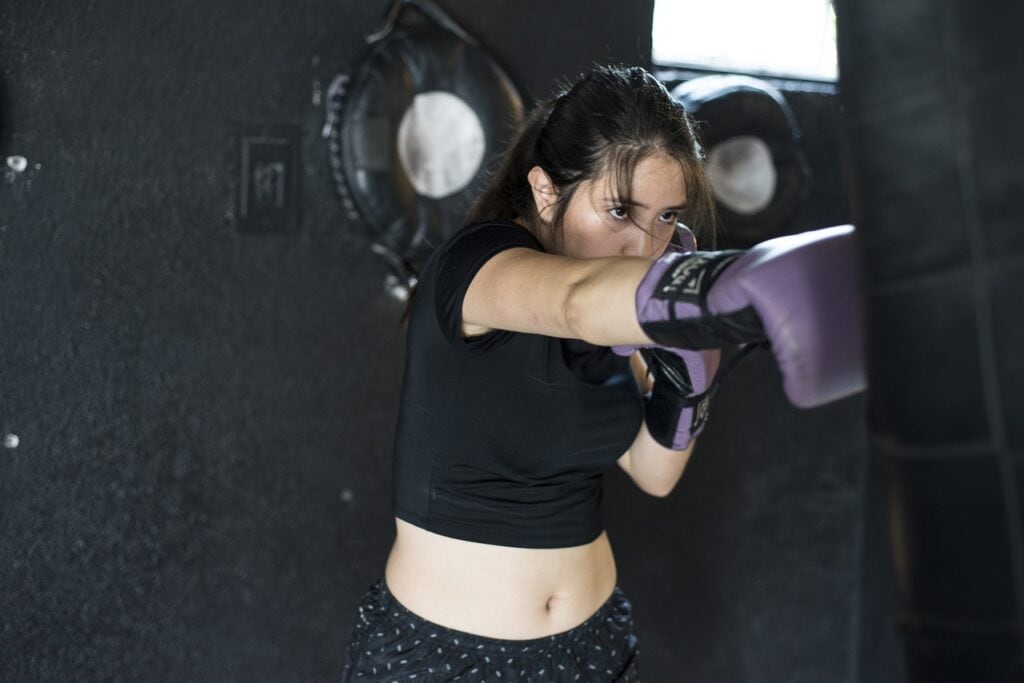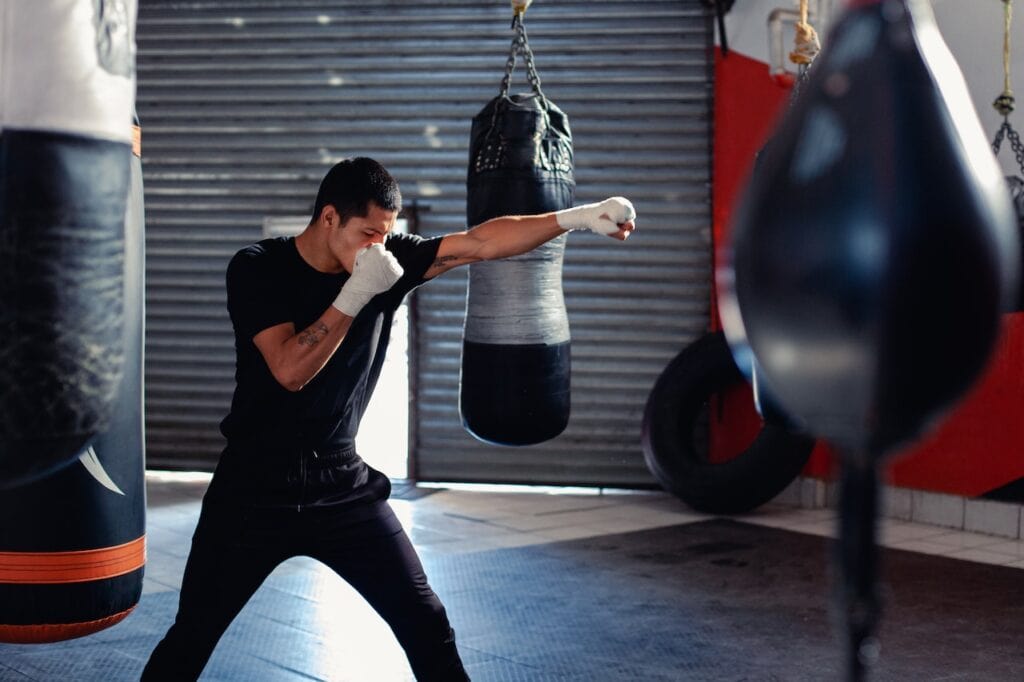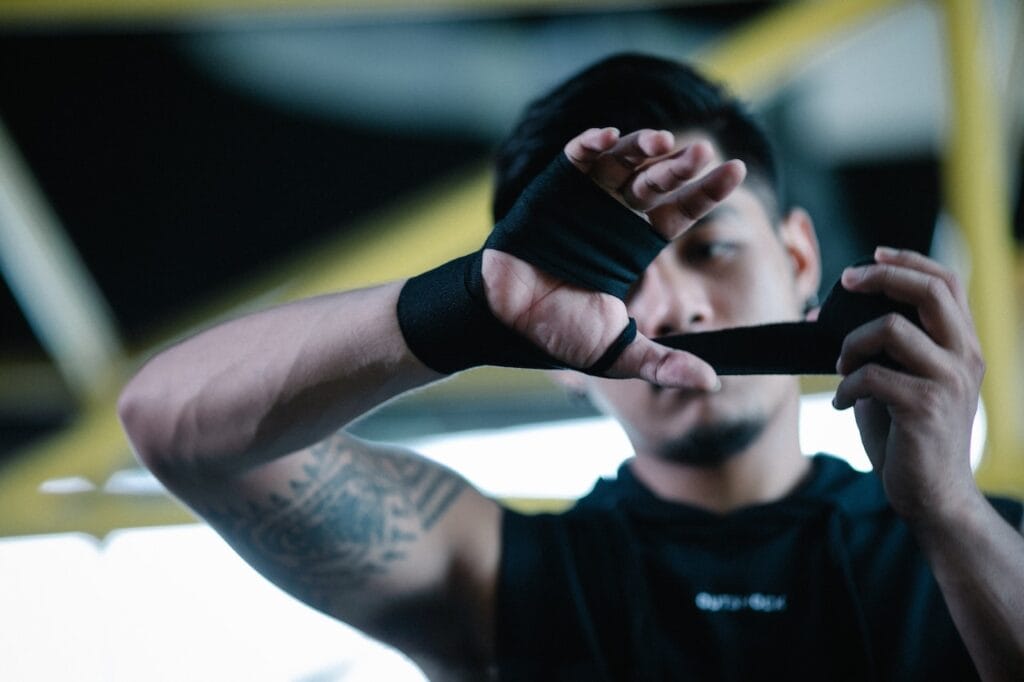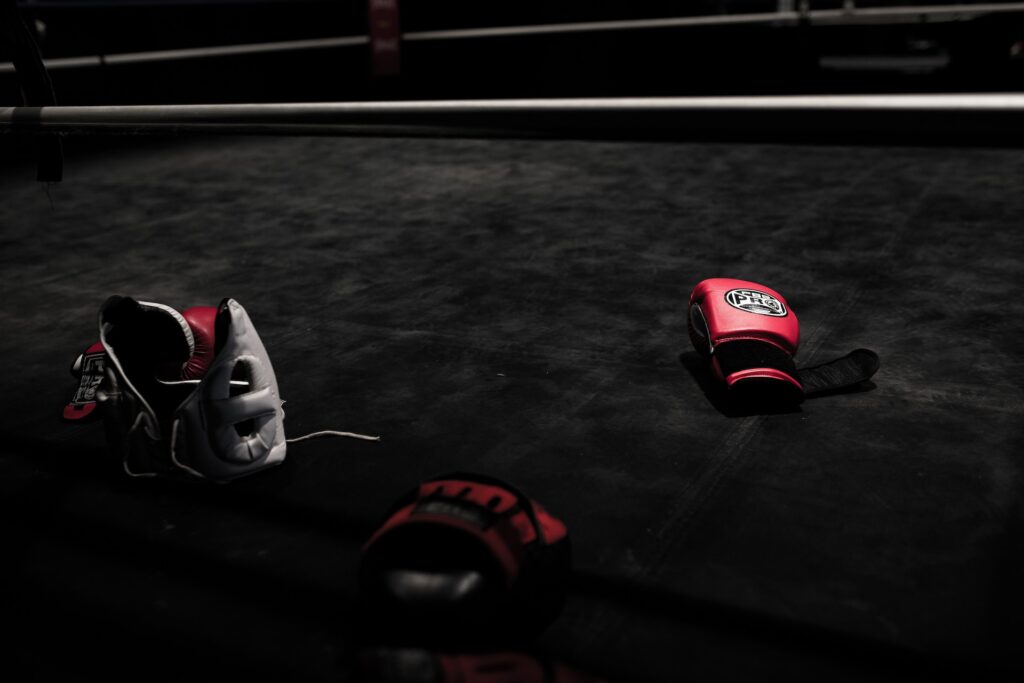Boxing is, without a doubt, one of the sports that is recognised all over the world the most. Boxing has produced some of the most well-known athletes in the sport's history, including the iconic Muhammad Ali, whose name appears on almost every list of athletes that people are familiar with.
Yet even people who don't follow the sport might be familiar with it, at least from its representation in popular cultures, such as in the numerous films that record the lives of boxers, both real and fictional.
When this is considered, it is not surprising that boxing-style training has gained more and more popularity over the years. Nevertheless, if you want decent exercise from boxing workouts, you can't just punch with reckless abandon. Instead, do it properly and get a good workout.
Boxing is a combat sport that requires strength, strategy, perfect technique, and excellent conditioning for competitors to last as many rounds as possible against their opponents. A professional boxing match can run up to 12 rounds, each lasting three minutes, with a one-minute rest between each round. That's going to be a tough battle to win.
10 Tips To Get Started With Boxing
It'll Kickstart Your Fitness Levels
Boxing is widely recognised as one of the most effective cardiovascular exercises available to the general public. In a single session, it may tone the upper and lower body and provide an excellent aerobic workout. In addition, it results in a full-body workout that can be done anywhere.
Boxing is the perfect way to get fit and lean in one fell swoop because it combines aerobic exercise (which helps build endurance and increases heart rate) and anaerobic exercise (which helps build and preserve muscle). Boxing is the perfect way to get fit and lean in one fell swoop because it combines aerobic and anaerobic exercise.
There Are Six Punches To Master
Boxing can be broken down into six basic punches, which I will number from one to six for your convenience. The jab and the cross are examples of straight punches, like numbers one and two.
The jab (one) is one of the weaker punches, and it is launched with your front hand. It is typically used to find your range and create openings for the more powerful blows. The cross (two) is a more forceful punch than the jab because it is delivered in a straight line with the rear hand.
The third and fourth blows are referred to as hooks. Large, powerful punches called hooks can be delivered to an opponent or the bag to assault them from the side.
It would help to concentrate on twisting your body to generate the proper power to perform them successfully. Uppercuts make up the fifth and sixth blows, which are the final ones thrown. The power behind these strikes comes primarily from your legs.
Taking Your Time Will Pay Off
Boxing is not merely a form of physical exercise but a skill that must be acquired. Whenever possible, focus on your technique. If you throw ten punches with proper technique, it will have a much higher impact on your body and your level of satisfaction than if you throw one hundred punches with poor technique.
Footwork Is Important
It's been said that having a solid boxing stance separates great boxers from those who are just ordinary. Your footwork will affect not only your speed but also your balance and the force of your punches.
When you have the right posture, you can channel the energy from the earth, through your body, out of your fist and into the bag. Your footwork will improve if you maintain a consistent training regimen and practice each of the basic punches repeatedly.
It's All About Full-Body Engagement
Even though you're punching with your arms, your energy comes from your entire body. Remember that the leg drive is the beginning of a punch, and it continues through the core before ending with the arms.
Remember that your entire body, not just your arms and shoulders, needs to move to generate power, so make sure to make the mistake of depending on your upper body strength alone. It is the most typical error that beginners make.
At the same time, keep the tension out of your muscles. Tense muscles aren't fluid, so that they won't allow any fluid movement. When muscles are allowed to relax and flow freely, the result is an increase in both speed and power.
Results Will Be Quicker Than You Expect
It depends on where you start, but for most people, two to three sessions per week of 45 minutes each should be adequate to start noticing increased muscle tone and fat reduction within two to three months. It, of course, is dependent on where you started. Some of the benefits to your mental health, such as an increased mood and decreased worry, will arrive immediately - in fact, you will likely feel better as soon as you start.
It Pays To Be Patient
When you're just starting, it's important to have patience and take your time learning how to perform the different moves correctly. Boxing is a sport that requires a high level of technical ability in addition to strong motor abilities. You will need to have speed, coordination, balance, and balance to remain standing while moving fast around the ring.
Agility will also be necessary to move and change direction quickly and precisely. A skilled boxer will also have the power necessary to throw forceful and effective punches, in addition to having a strong core, which is vital for power.
Shadow Boxing Is A Good Place To Start
If you want to practice your punches and footwork, think about combining an in-studio workout with a shadow boxing session at home — think of it as homework. If you do this, you can practice your punches and your footwork. It's possible that shadowboxing will make you feel foolish, but it's a tried-and-true method for perfecting your technique and encoding it into your muscle memory.
If you have never boxed before, you should move around your living room while watching boxing instructional videos on YouTube to learn the real punches and techniques.
Confidence Plays A Part
If you're having trouble with boxing, act confident and try to fake it until you make it. Boxing is one of those sports in which it is very common to have nerves, not because of the risk of getting hit but because of the constant movement and the need for your body to develop a rhythm.
So when you're working out, you should aim to leave your inhibitions at the door and go for it; while doing so, think about how a boxer would move and try to emulate that.
Studios Vary In Their Approach
If you are interested in boxing lessons, you must be aware that there are two distinct types of boxing gyms from which to choose: a boutique boxing gym, such as KOBOX, or a more traditional boxing club. Both of these things are abundant in London. Studios such as KOBOX offer a session that lasts for fifty minutes and mixes strength and conditioning work with boxing on bags.
The environment is designed to resemble a nightclub. A more conventional boxing ring, on the other hand, provides a setting and strategy that are more true to the sport. It's not a place for the faint of heart, and you won't find many luxuries here, but the training and sessions are unparalleled.
8 Things to Know Before Your First Boxing Workout
Come early and keep a positive mindset.
Boxing can be frightening, but above all else, show up with an open mind to have fun and get a terrific workout.
If you are attending a lesson in person, please arrive so we may bind your hands and direct you to the appropriate location. Pay attention to the teacher's words, but try not to overthink the situation. Regardless of your current level of competence, you are guaranteed to have excellent exercise, and you will gradually improve your technique.
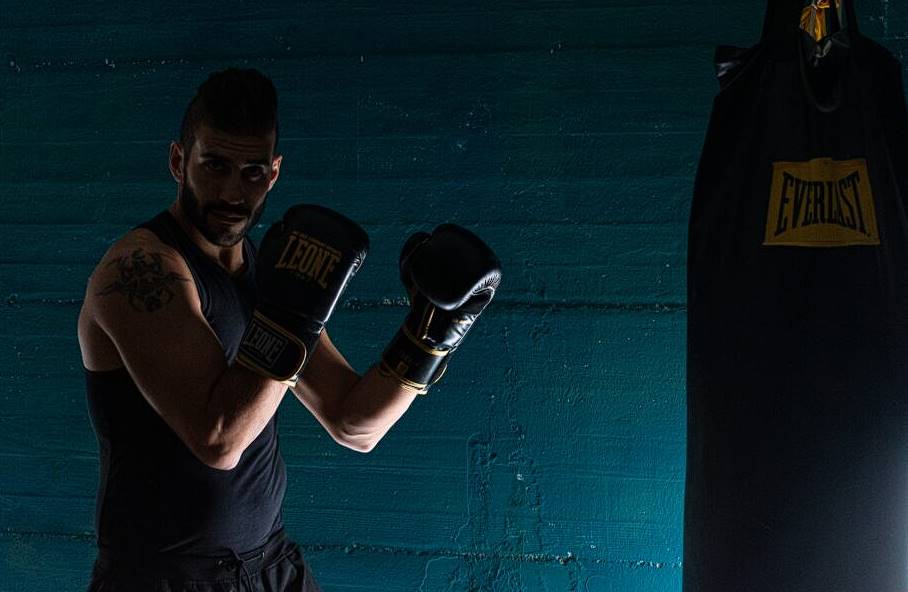
You won't be perfect on day one.
It doesn't matter if you're boxing to get in shape or if you're boxing to get in shape; you need to check your ego at the door. You will not be good on day one, which is a statement that many people will find challenging to hear.
It is not mean that you won't do a fantastic job or have a terrific exercise right from the beginning, despite what I just said. However, you will only have some techniques, combinations, or drill down exactly when you start training, which is good!
You can achieve your goals with effort, practice, and consistency. You have to agree that not every hit is a home run. You will get the most out of your first session if you perfect your speed rather than trying to hit hard.
Maintain some concentration level and the humility to know that things won't be flawless. Believe that with consistent, focused work, you will see progress.
You don't need tons of equipment.
It is up to you to decide whether or not you will use regular boxing equipment. The only things you will need for your first boxing session are yourself and a strong will to succeed.
Boxing may or may not require a significant investment in gear. Beginning shadowboxing is the first step for everyone (no bag necessary). Participating in boxing requires more than two fists and the desire to do so. Don't you have any gloves or a punching bag? No issue.
On the other hand, if you wish to include more pieces of equipment, you can do so without much difficulty. Wear whatever athletic clothing you feel most comfortable in, and bring a water bottle. In addition, it is wonderful that you have a punching bag, hand wraps, and gloves ranging from 12 to 16 ounces each.
In that case, you can perform the workout with either hand weights or without weights. If you plan on taking a class, you will most likely require boxing gloves and hand wraps; however, on your first visit, we will ensure that you have the correct size gloves and demonstrate how to wrap your hands.
Wear clothing that allows you to move.
About sporting equipment, make sure you dress appropriately. We recommend that you wear tank tops or something else that will allow you to have a full range of motion in your arms. Boxing requires a lot of movement from the upper body, particularly with the arms.
We recommend wearing leggings or shorts as bottoms; choose the one that makes you feel most at ease. Regarding footwear, boxing or wrestling shoes are the same, but a solid pair of training shoes will get you through your first couple of exercises.
Shoes with a thin sole and very little or no tread are recommended. Because supportive shoes that stick to the ground, like those used by trail runners, make it difficult to rotate properly and can even cause knee pain from torque, it is important to avoid them when possible. Likewise, training without boxing shoes is an excellent choice until you are financially able to get said footwear.
Don't be afraid
Although it looks scary from the outside, boxing isn't as nerve-wracking as you might imagine until you get into it. In boxing, a proverb goes, "The bag doesn't hit back." Boxing is a contact sport, but when practised simply for fitness and conditioning, it is the most enjoyable exercise you will ever experience. Have you ever heard of the "runner's high"? After a fantastic boxing exercise, the same idea applies.
Starting immediately is recommended, even if you cannot calm your anxiety. No one cares if you stink as long as you work hard and, more importantly, listen.
Mentally prepare to give it you're all.
Feeling nervous or hesitant before starting your first boxing session is natural, but you should push through those feelings and give the workout your full attention. First, you must have your mind clear and your body energised, and be prepared to give your best. After that, it is not an option to go through the motions.
If you're having difficulties doubling down, try channelling any anxiety or bad feelings you might be experiencing outside of the gym into your workout instead. If you've had a rough day, a good boxing session will help you forget about it completely.
It would help if you also gave your punches purpose by having a target in mind while throwing them. It will give your blows more impact. Thanks to this, you leave your troubles behind and concentrate better.
Be focused and have fun
Despite what you might believe, getting the most out of your first boxing workout is more challenging than you might think. The most important things are to keep moving and to have fun. Make sure you have a fallback combination ready if anything seems over your head or you need clarification.
If you need clarification about how to pull off a combination, trying to figure out a combo is a waste of time. Take mental notes of what caused confusion and practice resolving those issues on your own time so that the next time you face that combo, you are more prepared to dominate it. Be patient. You are going to become better with each attempt.
You'll feel sore—but also empowered
Boxing is not only a physical workout but also a mental workout, and there are many benefits to doing both. Once you've thrown that final punch, you need to be filled with a sensation of pleasure.
After completing your first boxing exercise, nothing is like being drenched in sweat from head to toe. It is normal for something new to make your muscles sore, but the more you practice and perfect your art, the less sore you will be because you will learn how to move effectively and efficiently.
You'll feel like you had a great workout that also engaged your mind, giving you a mental and emotional vacation from the stress in your life. After boxing, you'll feel like you had a great workout that also engaged your mind in a way that gives you a vacation from the stress.
5 Super Effective Boxing Tips for Beginners
1. Relax
In a boxing class, it's easy to identify the students who are just starting. I observe that your muscles are strained, your jaw is locked, and your punches are stiff.
Relaxation is the most important aspect of boxing.
You will notice increased power and quickness if you punch while maintaining a relaxed state.
If you keep your shoulders tense, you'll wind up looking like a turtle trying to hide in its shell. Therefore try to avoid doing that. Instead, make them lose.
Please don't keep your hands squeezed so firmly in the gloves that you can barely move them. Instead, keep your hands loose until the last possible second before you strike the target.
Have a good time with it. It makes no difference if this is your first time sparring or if you're worried about forgetting your combos if you still have to perform them. You'll feel and look much better if you chill and loosen up.
2. Breathing
Incorrect breathing techniques might cause you to lose your breath very quickly.
Take a moment to catch your breath before beginning each new combination as you work the bag. Exhale completely before you throw a punch. When you have finished your combo, take a moment to catch your breath and then continue.
Maintaining this pattern will lead to an increase in your punching power as well as a reduction in how quickly you tire out.
It is even more vital to breathe correctly when you are sparring.
It is simple to overreact and breathe irregularly when attacked by an adversary. Therefore, it is best to keep your respiration under control when you are sparring. Otherwise, you risk being overwhelmed, which is a precursor to making errors in judgment.
Use the same breathing patterns when working with bags as you attack your sparring partner. It will help you stay focused. Following the advice in this boxing training article, you can become a more formidable sparring partner.
3. Footwork
The fact that boxing is the only combat sport in which the hands deliver blows does not mean that footwork is irrelevant. On the contrary, footwork is one of those aspects of boxing that is often disregarded by beginners, even though it is extremely important for offensive and defensive reasons.
You should constantly be on the balls of your feet and not put too much weight on your foot in front of you. In that case, it will take you too long to move out of the way of a blow or to go closer to your opponent so that you can strike them.
Being light on your feet should be a primary priority for you while you are boxing, whether you are hitting pads, hitting the bag, or sparring.
Regarding footwork, angles are just as crucial as any other factor. You don't just move one step forward or back when you're in a conflict. You will find yourself face-first on the floor if you act this way.
Practice using different angles to either retreat or advance. If you want to avoid getting punched, try sliding your rear foot so that your body turns at an angle of around 45 degrees rather than taking a step backward. You won't take any damage and will be in the ideal position to respond with a counterattack.
Also, you can exercise this on the bag. After throwing a combination, shift your back foot to a new position behind the bag, changing the angle at which you are facing the bag. You are well on your way to becoming unbeatable if you immediately throw another combo after the last one.
4. Combinations
As you spend more time at the gym, you'll become more familiar with the combinations that work best for you. The only way to become more knowledgeable is to gain experience. So work on your combos for as long as possible, as this is one of the finest boxing tips for beginners.
Even an opponent with little combat expertise cannot be stopped by throwing one punch at a time. Get some practice throwing combinations of three, four, and even five punches.
You want your punches to come as a surprise, so shake things up slightly.
Make full use of the punches available to you and aim for both the head and the body. It is essential to remember that a particular combination might work well for one individual, but you might not enjoy it for yourself. So do whatever seems natural to you.
Initially, limiting yourself to just a few different permutations is fine. Putting in enough time practising those combos will feel as natural to you as a single jab. After that, you are free to proceed to attempt various permutations.
5. Have Fun
One of the training tips for boxing that can be applied to any other suggestions is the one that follows. Have a good time while you're working on your fitness.
Relax and enjoy yourself throughout the class because the other boxers won't be passing judgment on you. Don't worry about trying to outdo your students or your instructor; pay attention to the guidance they have for you, and don't try to outdo them. If you spend all your time worrying about looking stupid or embarrassing yourself in front of the other students, you won't be able to learn anything.
It is crucial to laugh and enjoy yourself when engaging in sparring. Your objective should not be to remove the head of your training partner. If that is the case, you will most likely be unconscious on the ground. Enjoy yourself while working toward the aim of getting better.
Keep your cool and fight with a smile on your face. You might even throw a combo that knocks out your opponent.
The Beginner's Guide to Boxing Training
Basic Boxing Gear
You will want to ensure you have the appropriate workout gear, regardless of whether you start by joining a gym. Even if you are not using a heavy bag, it is still a good idea to get acclimated to wearing protective gear whenever you shadowbox. It is especially important if you are using a heavy bag.
A wide variety of options are available if you are interested in purchasing a heavy bag. For example, Everlast provides choices for hanging, such as the Powercore Nevatear Heavy Bag, and certain freestanding bags, such as the OmniFlex Free Standing Heavy Bag, for customers who lack the space required for the former.
If you decide to get a heavy bag, one important thing to remember is that you should wait to jump from 0 to 100 pounds of weight.
When practising with a heavy bag, the most crucial thing you can do is wrap your wrists. The wraps can seem intimidating to some people but remember that they are meant to preserve the small bones in your wrist. Moreover, you are required to wear gloves. If you don't do those, you put yourself at risk of injury and could miss a day or two of training.
It would help to put gloves on your hands to protect them from the elements. Purchase a weight appropriate for your requirements, regardless of whether you select a more affordable or more expensive option. If you only hit a bag, you can avoid wearing gloves designed specifically for bag work (like these).
Use gloves that weigh 14 or 16 ounces if you eventually want to engage in sparring (in a controlled environment, such as a gym with a trainer). When starting, you should get heavier gloves to protect your hands.
Proper Stance
First, position your feet so they are shoulder-width apart, and one foot is in front of the other. It will be your starting position.
Your front foot should be pointed straight ahead at the person you pretend to be competing against. If you are right-handed, you should be pointing your left foot in a forward direction.
Of course, the rules are completely different if you're left-handed, often known as a Southpaw in boxing jargon. Richey suggests that you begin by maintaining your rear foot at an angle of around 45 degrees from the imaginary line on which your front foot is sitting. It is his recommendation, regardless of the situation.
Moreover, your front shoulder should be brought forward so that you are not standing with your back to your rival. It is extremely important because rotating your body will transfer more power to your blows.
You will have less agility if your feet are too close or far apart. You want to be able to go forward and backward as easily as you can move left and right.
Imagine you're in a battle and want to defend your head by holding both hands in front of your face. It is the position your hands should be in. When you've punched someone, make it a practice to bring your hands back into your body immediately.
It is time to throw some uppercuts, jabs, crosses, and hooks at your opponent.
How to Throw a Jab
The jab is delivered with the lead hand, the right for right-handed fighters and the left for Southpaws. It is not intended to be the strike that knocks an opponent out.
So if you see that hand coming, it's often used to mask or set up another more forceful punch. It's a setup punch, so if you see that hand coming.
As you jab, you will reach forward with your palm facing down and your two larger knuckles pointing directly ahead; of course, your fist will be closed throughout the entire motion. But, again, you are supposed to only throw some of your strength into it.
You always need to maintain your thumbs outside your hands. Holding your thumbs between your fingers puts your hands at a significant risk of suffering major injuries. It is true for all punches, but it is especially crucial to remember while transitioning from shadowboxing to training with a heavy bag.
How to Throw a Cross
A cross is a blow similar to a jab in that you are punching straight at your imagined opponent; however, the cross is performed by bringing your backhand across your body rather than to your side.
Although you will generate greater power with your hips, your backhand should continue to be aimed in front of you with the palm pointing downward.
It's not just armed pushing forward; rather, it's the rotation of the hips and waist and the extension of the arm, which is where the force comes from. Again, he used the analogy of baseball, saying that you will never see someone hit a home run by swinging with only their arms. Similarly, the power behind a punch is generated by the entire body working together.
How to Throw a Hook
The hook, specifically the lead hook, is an effective punch that should follow the cross. This way, you'll be switching hands at regular intervals. It is the strike that usually results in a knockout in boxing.
Although it is possible to throw a rear hook, the lead is the more typical technique, as it does not leave your torso as vulnerable to a counterattack.
The name "lead hook" comes from hooking your fist around your opponent or the bag in the shape of a half circle, which is how the move is executed. Think like your opponent has their hands out in front of them, and if you throw a straight punch, they'll block it. If you punch like a circle, you will avoid their hands and be able to reach them more easily.
In this move, your fist will approach the bag from the side rather than the front. Your fist should be aligned with that point, and your elbow should be around or slightly below shoulder height.
You could put a tray on your arm in that posture, and the tray wouldn't topple over. In contrast to the previous punches, in which your palm pointed downward, it will now be turned upward and facing you.
Some people perform this punch with their palms facing away. However, keeping your palm facing toward you helps ensure that you hit the bag with your entire fist rather than just clipping it with your pinky knuckle and putting yourself at risk of injuring your fingers. It is the best way to avoid injury to your fingers.
How to Throw an Uppercut
The fourth type of real punch is an uppercut, typically delivered with the backhand. When you want to deliver an uppercut, move your palm away from your face and toward the belly, but not down.
Many people put their hands down too low if you do that, you can tell what they are about to do. It's called telegraphing your punches when you do anything like that.
Just let go of your grip ever-so-slightly, and you'll have created something conceptually analogous to a hook, but rather than coming around the body, you'll be approaching from below. Put your hand behind your back, then draw a line straight from your belly button to your chin.
These are the four basic punches that you should work on perfecting before moving on to shadowboxing or bag practice.
Shadowboxing Basics
One excellent form of exercise is shadow boxing. Can is the keyword. But it would help if you did it correctly to grasp the hype and why it's considered a good cardio workout. Those are two reasons why.
As a novice, you don't need to worry too much about the combos you're throwing because the principle is straightforward to understand.
However, getting your body involved in the activity is the most crucial thing you can do to ensure a productive workout. One of the most typical mistakes novice boxers make is focusing just on punching the opponent without involving the rest of their body.
You may engage the rest of your body by varying the levels of your punches by stooping down and back up and making sure you rotate your torso into your strikes. Changing the levels of your punches is one way to do this. Also important in shadowboxing is the ability to block such punches. It is an additional factor that comes into play.
Lastly, ensure you are hopping back and forth, moving your feet around, and changing your weight between your legs. Because of these features, it is a full-body workout that everyone can perform without risk, requiring very little space.
If you want to train like a real boxer, you should try shadowboxing for full rounds that last three minutes and have "breaks" that last one minute in between each round. By "breaks," we mean "conditioning." Some common conditioning alternatives include core exercises such as jackknives, planks, or crunches and body weight exercises such as squats, which help keep your heart rate up while working for various muscle groups.
5 Beginner Mistakes To Avoid In Boxing Training
1) Neglecting The Fundamentals
For long-term success, mastering the principles of any discipline, whether it be martial arts or something else, is essential. Because of this, the training and education you receive throughout your first few months are of the utmost significance. Building a strong foundation in technical abilities will help you learn new things more quickly and accelerate your overall growth.
You may feel tempted to dive right into a new sport's more complicated technical aspects the moment you start playing it, especially given how wonderfully thrilling everything is at the beginning.
Beginners often want to get right into the action of boxing, especially during the "honeymoon phase" of the sport, where they imagine themselves to be the next Manny Pacquiao or Floyd Mayweather. Because of this, there is a greater likelihood of losing out on significant learning opportunities and features of the game.
Make an effort to master the fundamentals of executing basic maneuvers, such as throwing basic punches like the jab, cross, hook, and uppercut, as well as knowing how to block and dodge an opponent's attack. These are all extremely important pieces of equipment for the sport. However, before moving on to more complex varieties such as the shovel hook, the overhand, etc., you should perfect each fundamental technique properly.
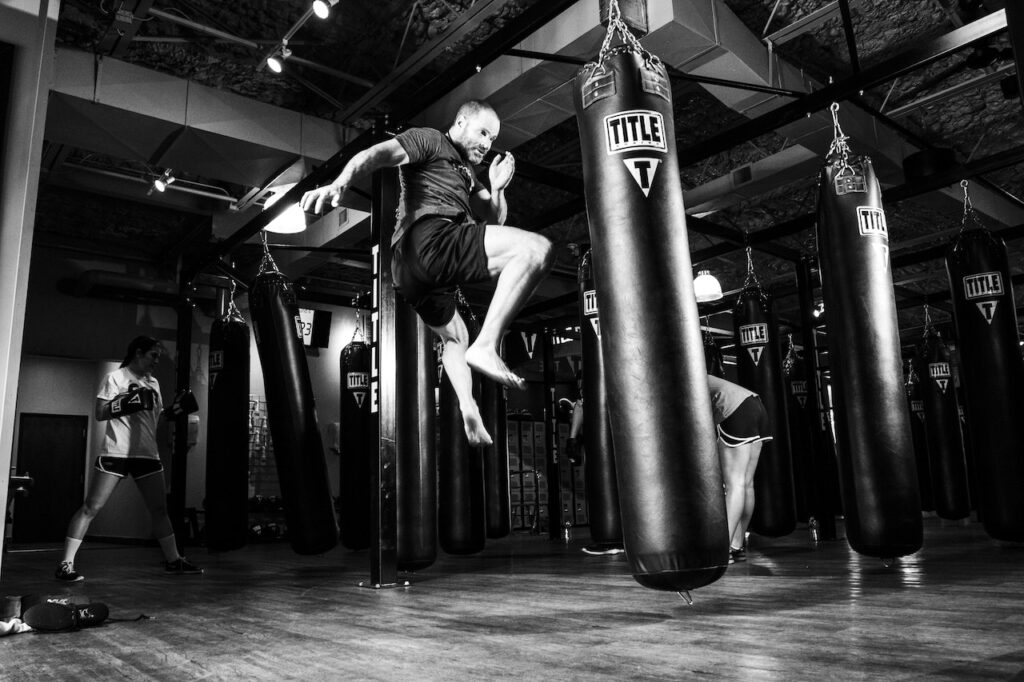
2) Lowering Your Guard
One of the most prominent illustrations of fundamental lessons is the importance of continuously maintaining vigilance and safeguarding oneself. It's a straightforward idea, but many fighters, even the more experienced ones, have a habit of unconsciously lowering their hands, which leaves them exposed because it leaves gaps in their protection.
Therefore, when you first start learning how to box, you should practice a lot to ensure that your hands are always up to defend the most important parts of your head, the temple and the chin.
When they are exhausted or throwing punches, beginners tend to let their guard down. It is especially true. It is a typical mistake that should be avoided whenever possible. But, if you are already doing this, you should attempt to correct it by reminding yourself frequently and exerting consistent effort while you practice.
In addition, you may ingrain this healthy routine into your muscle memory by giving your hands regular practice in the position of guarding. Pugilism centres on the principle that one should always look out for themselves first.
3) Neglecting footwork
Neglecting the footwork is another common mistake beginners make when just starting. Indeed, boxing's footwork isn't exactly the most riveting aspect of the sport, but it must still be essential. It is even more significant than the act of punching itself. When they initially begin training, most novices concentrate entirely on punching.
On the other hand, the most reputable boxing academies and trainers will insist that you prioritise footwork above all else. Because, in the long run, doing so will unquestionably put you in a position to be successful.
Footwork is the ability to move fluidly around the ring, which puts you in the best positions and ranges to either attack or defend. If you have superior footwork than your opponents, you will find it much easier to maneuver inside the ring and exert more command over them through ring generalship. Boxing requires that you become equally proficient with the movement of your arms and feet.
4) Breathing
Boxing is a sport where proper breathing plays a significant role, even though many novice boxers are unaware of its significance. Suppose you don't know how to breathe properly when boxing. You'll probably wind up gassed inside the first few rounds of a fight. If you know how to breathe properly, you can avoid this fate.
Improper breathing is the root cause of the lack of stamina and exhaustion experienced by many novices during the early stages of their training. For muscles to work properly, they need oxygen; the only way oxygen can enter the body is through breathing.
In addition, the way you breathe during a boxing match, particularly during a fight, is very different from how you breathe ordinarily. While it is difficult to get used to, especially when using a mouthguard for the first time, we recommend that you begin your training while wearing it as soon as possible.
The essential point to remember is to breathe in and out via the nose whenever you move or throw punches. When moving quickly and throwing punches, you should inhale deeply and exhale while maintaining tight control of your breathing. Your aerobic and anaerobic endurance will both benefit from this training.
5) Be Patient
Learning to box is a thrilling experience, and novice boxers typically want to see a rapid improvement in their skills. Yet, one of the most typical errors is speeding up the development process.
You must realise that even the most proficient and gifted professionals always work to improve their techniques and hone in on every minor aspect of their training. Boxing cannot be mastered immediately, especially if you are starting. The required practice could be anywhere from a few weeks to several years.
Take your time, and don't rush. Make sure you give yourself enough time to concentrate on the minute particulars of each technique. Compared to the 'rush' training you've been doing, taking things easy and learning the craft properly will allow you to start developing more as a boxer. As martial artists, we are responsible for making at least a one per cent improvement in ourselves daily. Because everyone learns at a different rate, you need to be patient with yourself.
Conclusion
Even though they are easy to follow, the boxing advice provided here for novices is really useful.
When you're just getting started, it's simple to make mistakes that put you over your head. Relax and have fun throughout your workouts, even though you should train hard and strive to be your best. It is just as vital as the former.
You should focus on mastering one or two of these suggestions at a time, and once you've reached that goal, you should move on to another aspect of your performance. Doing things in this manner will prevent you from becoming overwhelmed with information and improve your chances of permanently storing the correct boxing technique.
Boxing is challenging, but following these pointers can make it more difficult for your opponent to step into the ring with you.
Frequenly Asked Questions
How often should I train to see progress in boxing?
Training frequency depends on your goals, fitness level, and availability. To see progress in boxing, training at least two to three times per week is recommended. Consistency is key to improving your skills and overall fitness. As you advance, you may consider increasing the frequency and duration of your training sessions. However, listening to your body, allowing proper rest and recovery, and avoiding overtraining to prevent injuries are important.
Is boxing a safe sport to participate in?
Boxing can be a safe sport when practised with proper technique, under the guidance of experienced trainers, and with appropriate safety measures in place. The use of protective equipment, such as gloves, hand wraps, mouthguards, and headgear, is crucial to minimize the risk of injuries. Furthermore, learning the correct form and executing punches with control can significantly reduce the chances of harm. It is vital to train in a reputable boxing gym that prioritizes safety and provides a supportive environment for all participants.
Do I need any prior experience or skills to start boxing?
No, you do not need any prior experience or skills to start boxing. Boxing is a sport that can be learned by anyone, regardless of their age or fitness level. Beginners can start with basic techniques and gradually progress as they gain experience and improve their skills. Finding a reputable boxing gym or trainer who can guide you through the learning process safely and effectively is essential.
Is sparring necessary for boxing training?
Sparring, which involves controlled and supervised practice bouts with an opponent, is a crucial component of boxing training for those interested in competitive boxing. However, sparring is not necessary for everyone.
Many individuals engage in boxing for fitness and self-defence purposes without participating in sparring sessions. Plenty of other training techniques and exercises, such as bag work, pad work, and conditioning drills, can help you develop your skills, improve your fitness, and gain the benefits of boxing without engaging in full-contact sparring.
Can children participate in boxing?
While boxing is a sport that children can participate in, it is essential to ensure their safety and well-being. Many boxing gyms offer specialized youth programs that focus on technique, fitness, and discipline rather than competitive sparring.
These programs are designed to provide a safe and supervised environment for children to learn the fundamentals of boxing, improve their physical fitness, and develop self-confidence. It is crucial for parents and guardians to research and choose reputable boxing programs that prioritize the welfare of young participants and have qualified trainers experienced in working with children.
